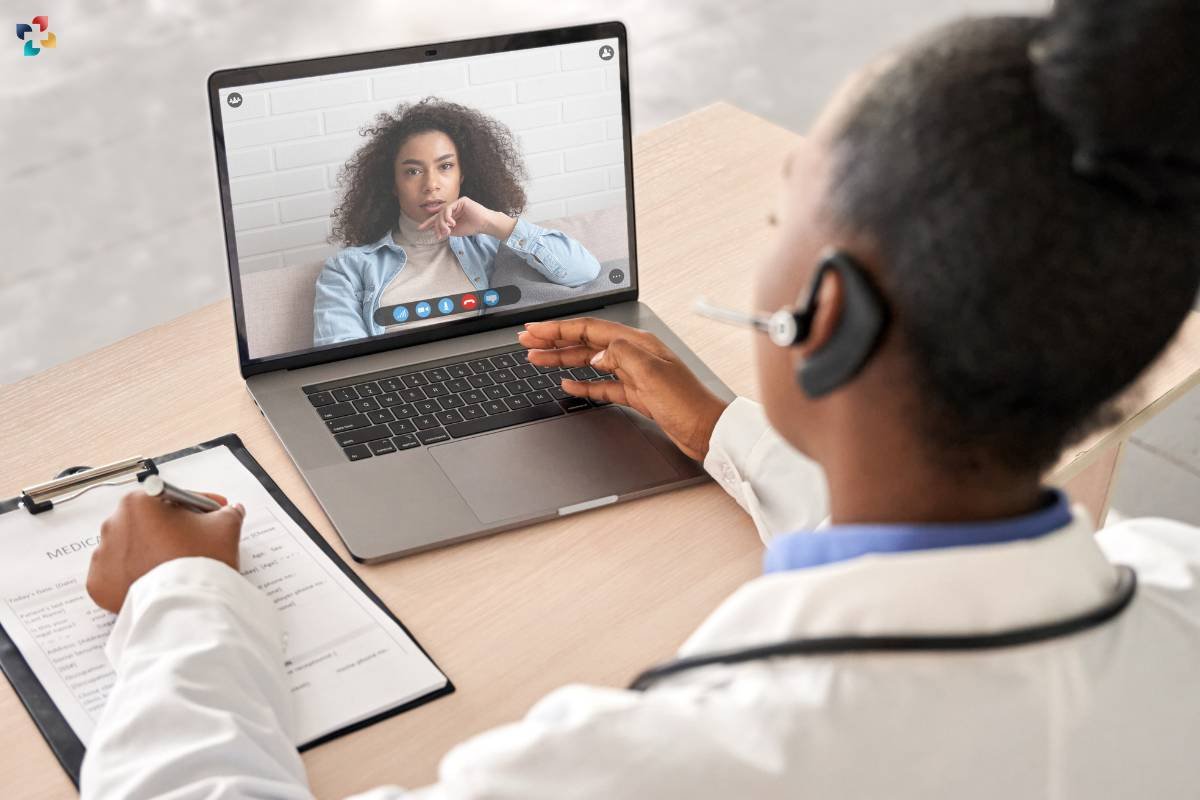The fast rise of telehealth in recent years has caused a considerable upheaval in the healthcare sector. The practice of providing healthcare services via digital means, such as video chats, messaging apps, and smartphone applications, including consultations, diagnosis, and treatment. This is known as telehealth. The debate of whether telehealth is the way of the future or the present in healthcare has gained significant traction due to its growing acceptance. This essay will examine the development of telehealth, its effects now, and its prospects for the future of healthcare.
The Evolution of Telehealth
Telehealth is not a new concept, but its widespread adoption has accelerated in recent years due to advancements in technology, changes in healthcare regulations, and the need for more accessible and convenient healthcare services.
1. Early Telehealth
The roots of this can be traced back to the early 20th century, with the use of telephones and radio waves for medical consultations. In the mid-20th century, telehealth expanded with the use of closed-circuit television for medical education and consultation between healthcare providers and patients in remote areas.
2. Internet and Telemedicine

With the proliferation of the internet in the late 20th century, this evolved into telemedicine. Healthcare providers began using email, video conferencing, and digital images to communicate with patients and offer remote consultations. This marked the beginning of a more patient-centered approach, where individuals could seek medical advice from the comfort of their homes.
3. Smartphones and Mobile Apps
The widespread adoption of smartphones and mobile apps further transformed the telehealth landscape. Patients could now access healthcare services through their mobile devices, making it more convenient and accessible. Mobile health apps offer a range of features, from monitoring vital signs to consulting with healthcare professionals.
The Current Impact of Telehealth
Telehealth has seen remarkable growth and acceptance in recent years, driven by several factors:
- Pandemic Response: The COVID-19 pandemic accelerated the adoption of telehealth, as it offered a safe way to provide healthcare services while reducing the risk of virus transmission. Healthcare providers rapidly transitioned to virtual care to continue offering services to patients.
- Convenience and Access: Telehealth provides unprecedented convenience for patients, allowing them to access healthcare from anywhere with an internet connection. This is particularly beneficial for individuals in remote or underserved areas.
- Reduced Wait Times: Telehealth has reduced wait times for patients seeking medical advice. Rather than waiting for weeks to see a specialist, individuals can often schedule a telehealth appointment much sooner.
- Monitoring and Follow-Up: Telehealth has proven effective in remote patient monitoring and follow-up care. Patients with chronic conditions can be monitored, and their progress can be assessed without frequent in-person visits.
- Cost Savings: Telehealth can be more cost-effective for patients, eliminating the need for travel and reducing healthcare-related expenses.
- Healthcare Provider Flexibility: Healthcare providers can offer telehealth services outside traditional office hours, providing flexibility to both patients and practitioners.
- Mental Health Support: Telehealth has played a significant role in expanding access to mental health services, and addressing the growing demand for mental health support, especially during the pandemic.
Challenges and Concerns
While telehealth has made significant strides, it is not without its challenges and concerns:
1. Technical Barriers
Not everyone has access to the necessary technology and internet connectivity for telehealth services, leading to disparities in access to care.
2. Privacy and Security

Protecting patient data and ensuring the security of telehealth platforms is a critical concern, particularly with the potential for data breaches.
3. Regulatory Issues
Telehealth regulations vary by country and region, leading to complexities and uncertainties in providing services across different jurisdictions.
4. Quality of Care
Some argue that the quality of care may suffer in virtual consultations, as physical exams and in-person interactions can be essential for accurate diagnosis and treatment.
5. Reimbursement and Insurance
The reimbursement of telehealth services by insurance companies and government healthcare programs is a complex issue that needs to be addressed for sustainable telehealth adoption.
6. Licensure and State Borders
Healthcare providers may be restricted from providing telehealth services across state borders due to licensing requirements, limiting access to care for some patients.
The Future of Telehealth
Telehealth has already made a significant impact on healthcare, but its full potential is yet to be realized. Here are some ways in which telehealth is shaping the future of healthcare:
1. Hybrid Care Models
The future of healthcare may see a combination of in-person and telehealth services. Hybrid care models can provide the best of both worlds, allowing patients to choose between virtual and in-person consultations.
2. Remote Monitoring and Wearable Technology
The integration of wearable technology and remote monitoring devices will enable continuous data collection, enhancing the ability to monitor chronic conditions and overall health.
3. AI and Telehealth

Artificial intelligence (AI) will play a significant role in telehealth, assisting healthcare providers with diagnostic tools, triage, and personalized treatment plans.
4. Global Reach
Telehealth has the potential to break down geographical barriers, allowing patients to access medical specialists and services worldwide, regardless of their location.
5. Telehealth for Specialized Care
Telehealth can provide access to specialized care, such as consultations with rare disease experts or renowned specialists, making medical expertise more accessible.
6. Preventive Care and Health Education
Telehealth can be a powerful tool for preventive care and health education, enabling healthcare providers to engage with patients to promote healthy lifestyles and disease prevention.
7. Mental Health Services
The future of healthcare includes expanded mental health services, offering easier access to therapy and counseling for those who need it.
8. Regulatory Frameworks
As the adoption of telehealth grows, regulatory frameworks will likely evolve to address privacy, security, licensure, reimbursement, and standardization of telehealth practices.
Conclusion
The COVID-19 epidemic and the necessity for convenient, accessible healthcare services have both contributed to and hastened the use of telehealth in recent years. Although there are many advantages to telehealth, there are drawbacks as well, including issues with privacy, regulation, technological access, and healthcare quality.
Telehealth, which offers cutting-edge technologies for remote monitoring, medical consultations, and the integration of technology to improve patient care, is set to play a significant part in the future of healthcare. For telehealth to flourish in a way that is both equitable and sustainable, it is imperative that the problems and obstacles around it, such as unequal access and privacy concerns, are addressed.
The full potential of telehealth is yet to be realized, and as technology continues to advance, its role in shaping the future of healthcare is only set to expand. With careful consideration of the challenges and continuous improvement in telehealth practices, it has the potential to revolutionize the way healthcare is delivered, making high-quality medical care more accessible to individuals around the world.











